Today’s Current Affairs: 13th July 2024 for UPSC IAS exams, State PSC exams, SSC CGL, State SSC, RRB, Railways, Banking Exam & IBPS, etc
Table of Contents
Squalus hima : New Species Of Deep Water Dogfish

Scientists from the Zoological Survey of India (ZSI) recently discovered a new species of deep-water dogfish shark Squalus hima from a fishing harbour in Kerala along the Arabian Sea.
- Squalus hima is a new species of dogfish sharkdiscovered from the southwest coast of India.
- Squalus is a genus of dogfish sharks in the family Squalidae, commonly known as spurdogs and are characterized by smooth dorsal fin spines.
- They also have an angular short snout, a small mouth almost as wide as the snout, a first dorsal fin origin behind the pectoral fins, and a body without any spots.
- They are exploited for their liver oil, which contains high levels of squalene (or squalane when it is processed for products).
- It is in high demand in the pharmaceutical industry, particularly for making high-end cosmetic and anti-cancerous products.
- The newly discovered Squalus hima differs from other species by the number of precaudal vertebrae, total vertebrae, teeth count, trunk & head heights, fin structure, and fin colour.
Liberalised Remittance Scheme : RBI

The Reserve Bank of India (RBI) in a notification issued recently allowed resident individuals to open Foreign Currency Accounts (FCAs) in International Financial Services Centres (IFSCs) at GIFT City in Gujarat under the Liberalised Remittance Scheme (LRS).
- Liberalised Remittance Scheme (LRS) is a foreign exchange policy initiative introduced by the RBI in 2004.
- It is intended to simplify and streamline the process of remitting funds outside India.
- This scheme helped Indians overcome international fund transfer restrictions as set by the FEMA (Foreign Exchange Management Act), 1999.
- Under LRS, all resident individuals, including minors, are allowed to freely remit up to USD 250,000 per financial year (April–March).
- Only individual Indian residents are permitted to remit funds under LRS. Corporates, partnership firms, HUFs, trusts, etc. are excluded from its ambit.
- This can be for any permissible current or capital account transaction or a combination of both.
- The remittances can be made in any freely convertible foreign currency.
Dengue : Rise
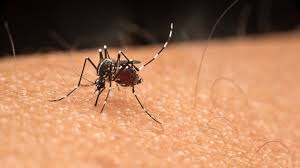
The High Court of Karnataka recently took Suo motu cognisance of the rise and the spread of dengue across the State.
- Dengue (break-bone fever) is a mosquito-borne viral infection.
- It is more common in tropical and subtropical climates, mostly in urban and semi-urban areas.
- While many dengue infections are asymptomatic or produce only mild illness, the virus can occasionally cause more severe cases and even death.
- It is transmitted to humans through the bite of infected Aedes mosquitos carrying one of four types of dengue virus (DENV).
- Dengue isn’t contagious from person to person except when passed from a pregnant person to their child.
- An estimated 400 million dengue infections occur worldwide each year, with about 96 million resulting in illness.
- A person can be infected with dengue multiple times in their life.
- The most common symptoms are high fever, headache, body aches, nausea, and rash. Most will get better in 1–2 weeks.
- A very small portion of people with dengue fever get a severe case. It’s called dengue hemorrhagic fever.
Symptoms show up as the fever begins to ease. These may include vomiting that does not go away, rapid breathing, blood in vomit, and bleeding gums. - Individuals who are infected for the second time are at greater risk of severe dengue. In severe cases, dengue can be fatal.
- There is no specific medicine to treat dengue. The focus is on treating pain symptoms.
- It is generally treated with supportive care such as pain relievers, bed rest, and fluids.
Salvinia molesta:
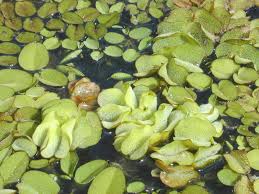
It was reported that an exotic beetle released into a vast reservoir in Betul district has successfully eradicated an invasive weed species, Salvinia molesta, within 18 months.
- Salvinia molesta is a highly detrimental aquatic fern.
- It is commonly known as “Water Fern” and is an aggressive and fast-growing Alien Invasive Aquatic Weed of South-Eastern Brazil origin.
- It prefers tropical, sub-tropical or warm temperate areas of the world and grows best in still or slow-moving water bodies including ditches, ponds, lakes, slow rivers and canals.
- It is locally known as “Chinese Jhalaar”, this invasive species was first spotted in India in 2018 and had completely carpeted the reservoir by 2019.
- It may form dense vegetation mats that reduce water flow and lower the light and oxygen levels in the water.
- It has been widely introduced as an ornamental plant and has been used as a mulch for crops in dry areas near water bodies where it grows
MeDevIS Platform:

The World Health Organization (WHO) has introduced an online platform called MeDevIS.
- Medical Devices Information System (MeDevIS) is the first global open-access clearing house for information on medical devices.
- It is designed to support governments, regulators and users in their decision-making on the selection, procurement and use of medical devices for diagnostics, testing and treatment of diseases and health conditions
- It replaces paper-based literature search across multiple publications with non-standard device names which can add to the complexity.
- Along with providing a single platform, MedevIS also aims to help make the naming of medical devices simpler.
- MeDevIS references two international naming systems for medical devices:
- European Medical Device Nomenclature (EMDN): It is mostly used in European countries for registration in the European database.
- Global Medical Device Nomenclature (GMDN): It is used in regulatory agencies in Australia, Canada, the United Kingdom and the USA and other Member States.
- The naming systems include coding and definitions and can be used in every country to facilitate registration for regulatory approval, procurement and supply, inventories in health facilities, tracking and pricing.
- It can be useful for national policy-makers to develop or update their own national lists for procurement of health technologies and devices and can contribute to the progress towards universal health coverage.
- It can also help agencies with health insurance and reimbursement policies for patients.
Mutual Recognition Agreement With Taiwan:

The Mutual Recognition Agreement (MRA) for organic products between India and Taiwan has been implemented.
- Mutual Recognition Agreement (MRA) with Taiwan is a landmark achievement as it is the first bilateral agreement for organic products.
- The implementing Agencies for the MRA are the Agricultural and Processed Food Products Export Development Authority (APEDA), Ministry of Commerce and Industry, India and the Agriculture and Food Agency, Ministry of Agriculture (AFA), Taiwan.
- Under this agreement, agricultural products produced and handled organically in conformity with the National Programme for Organic Production (NPOP) and accompanied by an organic demonstration document issued by an accredited certification body under NPOP are allowed for sale in Taiwan as organically produced including display of the “India Organic” logo.
- It will ease the export of organic products by avoiding dual certifications; thus, reducing compliance costs, simplifying compliance requirements by adhering to only one regulation and enhancing trade opportunities in the organic sector.
- It will pave the way for the export of major Indian organic products such as Rice, Processed Food, Green/Black and Herbal Tea, Medicinal plant products etc to Taiwan.
Thirty Meter Telescope:

Indian scientists have developed an open-source tool to generate an infrared star catalogue for the Adaptive Optics System (AOS) of the Thirty Meter Telescope (TMT).
- Thirty Meter Telescope (TMT) is a revolutionary class of extremely large telescopes that will enable us to explore deeper into space and observe cosmic objects.
- It is an ambitious international project involving India, the United States, Canada, China and Japan that aims to significantly advance our understanding of the universe.
- It is a next-generation astronomical observatory designed to provide unprecedented resolution and sensitivity with its massive 30-meter primary mirror, advanced adaptive optics system, and state-of-the-art instruments.
- Goal is:
- to Study the early universe and the formation and evolution of the first galaxies and stars after the Big Bang.
- Investigate the formation, structure and evolution of galaxies across cosmic time.
- Study the relationship between supermassive black holes and their host galaxies.
- Investigate the formation of stars and planetary systems.
- Characterize exoplanets and study their atmospheres.
Hydrogen peroxide Nebulisation:
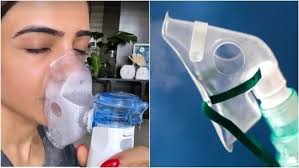
Recently an actress sparked controversy by advocating hydrogen peroxide nebulisation for viral infections, suggesting it as an alternative to medications.
- This method involves inhaling a mist of diluted hydrogen peroxide, typically used in disinfectants, which can lead to harmful by-products and lung damage.
- Hydrogen Peroxide (H₂O₂) is a colourless liquid with a slightly sharp odour.
- Hydrogen peroxide can cause irritation to the eyes, nose, skin, and throat.
- Workers may be harmed from exposure to hydrogen peroxide.
90% Soil Degradation By 2050:
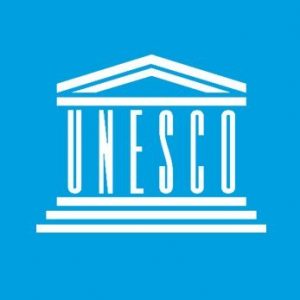
At an international conference in Agadir, Morocco, United Nations Educational, Scientific and Cultural Organization (UNESCO) Director-General urged its 194 Member States to improve soil protection and rehabilitation as the organisation warns that by 2050, up to 90% of the planet’s soil could be degraded.
- This alarming prediction highlights a major threat to global biodiversity and human life.
- UNESCO states that according to the World Atlas of Desertification, 75% of soils are already degraded, directly affecting 3.2 billion people. The current trend may increase the impact to 90% by 2050.
- UNESCO will establish a ‘world soil health index’ with international partners to standardise soil quality measurement and comparison.
- This will help identify trends in degradation or improvement and vulnerable areas, aiming to improve the evaluation of soil management practices.
- UNESCO will launch a pilot programme for sustainable soil and landscape management in ten natural sites supported by its Biosphere Reserves Programme.
- The program aims to assess and improve management methods, and promote best practices worldwide.
- UNESCO will train member government agencies, indigenous communities, and conservation organisations to access soil-protection tools.
Soil Degradation:
- Soil degradation is defined as a change in soil health status resulting in a diminished capacity of the ecosystem to provide goods and services for its beneficiaries. It involves biological, chemical, and physical decline in soil quality.
Employment Rate Rises Significantly In FY24 : RBI

The Reserve Bank of India (RBI) data revealed a significant rise in India’s employment rate, growing by 6% in FY24 from 3.2% in FY23, reflecting positive trends in the labour market.
- The RBI’s India KLEMS [Capital (K), Labour (L), Energy (E), Material (M) and Services (S)] database showed that in the year 2022-23, employment in the country was 57.75 crore, compared to 56.56 crore in 2021-22.
- The database covers 27 industries and provides estimates at the broad sectoral levels and all-India levels. It includes measures of Gross Value Added, Labour Employment, Capital Stock, and inputs such as Energy, Material, and Services.
- The female unemployment rate showed a notable decline, dropping from 9.2% in January–March 2023 to 8.5% in January–March 2024.
- The female worker population ratio (WPR) in urban areas increased from 20.6% in January – March 2023 to 23.4% in January – March 2024, indicating a general upward trend in WPR.
Ariane 6 Rocket : Launch
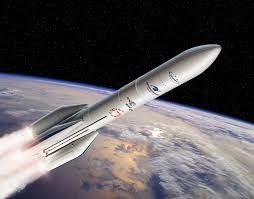
The European Space Agency (ESA) successfully launched the Ariane 6 rocket, for the first time, from French Guiana, marking Europe’s return to independent space access after delays and setbacks.
- It is the latest rocket in Europe’s Ariane rocket series (taking over from Ariane 5) that can launch missions from low-Earth orbit and farther out into deep space.
- Ariane-5 Rocket has been used to launch ISRO’s communication satellites like GSAT-11, GSAT-30, GSAT-31, ESA’s Juice mission and NASA’s James Webb Space Telescope (JWST).
- This debut flight carried nine cubesats into orbit, including NASA’s CubeSat Radio Interferometry Experiment (CURIE) and other satellites studying Earth’s climate and weather.
- The Vinci engine used in the upper stage is designed to restart repeatedly, allowing the operating agency to place payloads into several different orbits.
- 29 missions will be launched by Ariane 6 over the next several years and aims for up to 12 flights a year.




